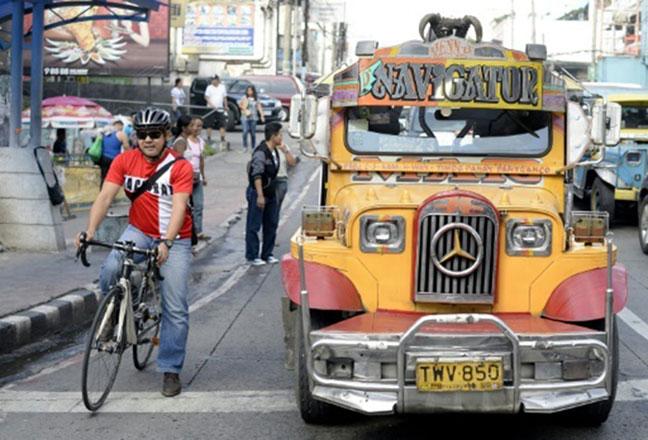You are here
Jakarta’s traffic grief to residents but boon for some
By Reuters - Jun 15,2015 - Last updated at Jun 15,2015
JAKARTA — Jakarta’s traffic jams are a constant vexation for the city’s 10 million residents. With the chaos not looking to abate anytime soon, entrepreneurial types have made it their business to help fellow commuters circumvent the world’s worst gridlock.
Commuters spend three to four hours a day in their cars on Jakarta’s roads, a situation which Indonesian businessman Nadiem Makarim described as a huge waste of productivity. The average speed of traffic is 8.3km per hour, slower than a runner of average fitness covering the same distance in a race.
Yet the Indonesian capital’s glaring inefficiencies have also created opportunities for the likes of Makarim, who has launched a smartphone app that lets users summon a motorbike rider to weave them quickly through gridlocked traffic, deliver a meal or even get the shopping.
Since the launch of the app in January, the number of distinctive, green-jacketed drivers on its books has jumped tenfold to 10,000. The app itself has been downloaded nearly 400,000 times in six months — a national record.
“I created GO-JEK because I really needed it,” Makarim told Reuters this week in Jakarta on the sidelines of the annual New Cities Summit, where over 800 CEOs, mayors, thinkers, artists and innovators met to discuss urban change.
Jakarta’s congestions are one of the biggest brakes on economic growth. Officials say the traffic — adjudged recently by motor-oil firm Castrol to be the world’s worst based on an analysis of stopping and starting by drivers — costs the economy about 65 trillion rupiah, or nearly $5 billion, a year.
A slump in infrastructure investment after the Asian financial crisis of the late 1990s, problems freeing up land for development, turf wars between city departments, and poor planning all means Jakarta’s public transport cannot cope with the numbers of people moving about the city.
The city’s population is growing by 120,000 a year partly due to rural-urban migration, putting enormous pressure on already-stretched infrastructure such as transport.
With an average annual income of around $3,800 per head, five times the national average, migrants are pouring into Jakarta seeking a better life than would be possible as farmers or fishermen.
“This accelerating urbanisation is largely an Asian story,” said John Rossant, chairman of the New Cities Foundation. “There’s been nothing like this in human history.”
Waze to go
Traffic-navigation app Waze is another big hit with Jakarta residents, who use it to identify the speediest routes through the congestion and to alert other users to accidents, floods and even greasy-palmed police officers standing on street corners.
“Jakarta is indeed a huge market for us,” said Waze spokeswoman Julie Mossler. The city ranks regularly within the top 10 of Waze’s 200 world markets, with 800,000 users.
Inefficiency also creates opportunities of a more low-tech order.
At the edge of the city centre, roadside “jockeys” rent themselves out as passengers for 20,000 rupiah ($1.50) to drivers seeking to dodge a 3-in-1 rule prohibiting cars with fewer than three people from main roads during peak hours.
Amid the palls of exhaust fumes at clogged junctions, freelance traffic conductors battle to keep cars flowing for loose change handed through windows by frazzled drivers.
Minimarts offering commuters a spot to eat, drink and browse the Internet while waiting for the rush-hour traffic to clear are also thriving.
The city is now investing in better public transport. Construction of a mass rapid transit system began in 2013, after decades of delay, and is slated to open in 2018.
But, with at least 1,000 new cars and motorbikes added to the city’s roads every day, entrepreneurs don’t see an immediate threat to their business models.
“I would happily shut down GO-JEK if Jakarta could solve its traffic problems,” said Makarim. “Unfortunately it’s virtually impossible to solve in the next 10 years.”
Related Articles
MANILA — Cyclist Jack Yabut is on a perilous and likely futile crusade to help the Philippine capital beat “Carmageddon”, but even if his ca
When the people whose houses hug the narrow warren of streets parallelling the busiest urban freeway in America began to see bumper-to-bumper traffic crawling by their homes a year or so ago, they were baffled.
JAKARTA — Sitting on the side of a Jakarta road anxiously waiting for his phone to ping, driver Muhammad Ridwan says it is now barely


















